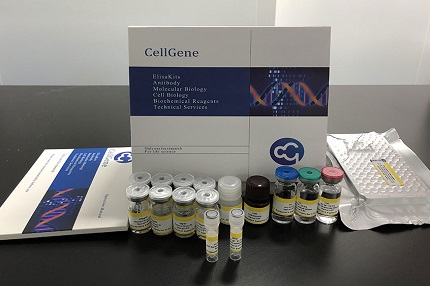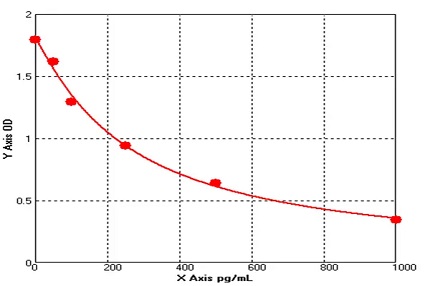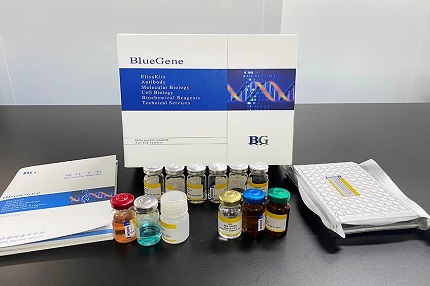E03E0134 Mouse Endotoxin ELISA kit
The Mouse Endotoxin ELISA kit can be used to identify samples from the mouse species. Endotoxin can also be called Lipopolysaccharides, LPS, and EDT.


E03E0134 Mouse Endotoxin ELISA kit
The Mouse Endotoxin ELISA kit can be used to identify samples from the mouse species. Endotoxin can also be called Lipopolysaccharides, LPS, and EDT.
Product Information | |
Cat. No. | E03E0134 |
Product Name | Mouse Endotoxin ELISA kit |
Species | Mouse |
Product Size | 48 Tests / 96 Tests |
Concentration | 100-2500pg/ml |
Sensitivity | 1.0pg/ml |
Principal | Competitive ELISA |
Sample Volume | 100 ul |
Sample Type | Serum, plasma, cell culture supernatants, body fluid and tissue homogenate |
Assay Time | 90 minutes |
Platform | Microplate Reader |
Conjugate | HRP |
Detection Method | Colorimetric |
Storage | 2-8°C |
Kit Components | ||
MATERIALS | SPECIFICATION | QUANTITY |
MICROTITER PLATE | 96 wells | stripwell |
ENZYME CONJUGATE | 6.0 mL | 1 vial |
STANDARD A (0.5mL) | 0 pg/mL | 1 vial |
STANDARD B (0.5mL) | 100 pg/mL | 1 vial |
STANDARD C (0.5mL) | 250 pg/mL | 1 vial |
STANDARD D (0.5mL) | 500 pg/mL | 1 vial |
STANDARD E (0.5mL) | 1000 pg/mL | 1 vial |
STANDARD F (0.5mL) | 2500 pg/mL | 1 vial |
SUBSTRATE A | 6 mL | 1 vial |
SUBSTRATE B | 6 mL | 1 vial |
STOP SOLUTION | 6 mL | 1 vial |
WASH SOLUTION (100 x) | 10 mL | 1 vial |
BALANCE SOLUTION | 3 mL | 1 vial |
Principle of the Assay |
EDT ELISA kit applies the competitive enzyme immunoassay technique utilizing an anti-EDT antibody and an EDT-HRP conjugate. The assay sample and buffer are incubated together with EDT-HRP conjugate in pre-coated plate for one hour. After the incubation period, the wells are decanted and washed five times. The wells are then incubated with a substrate for HRP enzyme. The product of the enzyme-substrate reaction forms a blue colored complex. Finally, a stop solution is added to stop the reaction, which will then turn the solution yellow. The intensity of color is measured spectrophotometrically at 450nm in a microplate reader. The intensity of the color is inversely proportional to the EDT concentration since EDT from samples and EDT-HRP conjugate compete for the anti-EDT antibody binding site. Since the number of sites is limited, as more sites are occupied by EDT from the sample, fewer sites are left to bind EDT-HRP conjugate. A standard curve is plotted relating the intensity of the color (O.D.) to the concentration of standards. The EDT concentration in each sample is interpolated from this standard curve. |
Coefficient of Variance | Intra Variation% <10% | |
Inter Variation% <12% | ||
Recovery | 95-102% | |
Linearity | Diluent Ratio | Range % |
1:2 | 93-105 | |
1:4 | 88-106 | |
1:8 | 86-108 | |
Specificity/Cross-reactivity | No significant cross-reactivity or interference between EDT and analogues was observed. | |




E03E0134 has been referenced in the below publications:
Effects of chronic noise exposure on the microbiome-gut-brain axis in senescence-accelerated prone mice:implications for Alzheimer’s disease.
Environmental noise stress disturbs commensal microbiota homeostasis and induces oxi-inflammmation and AD-like neuropathology through epithelial barrier disruption in the EOAD mouse model.
Related Bluegene Biotech Products



